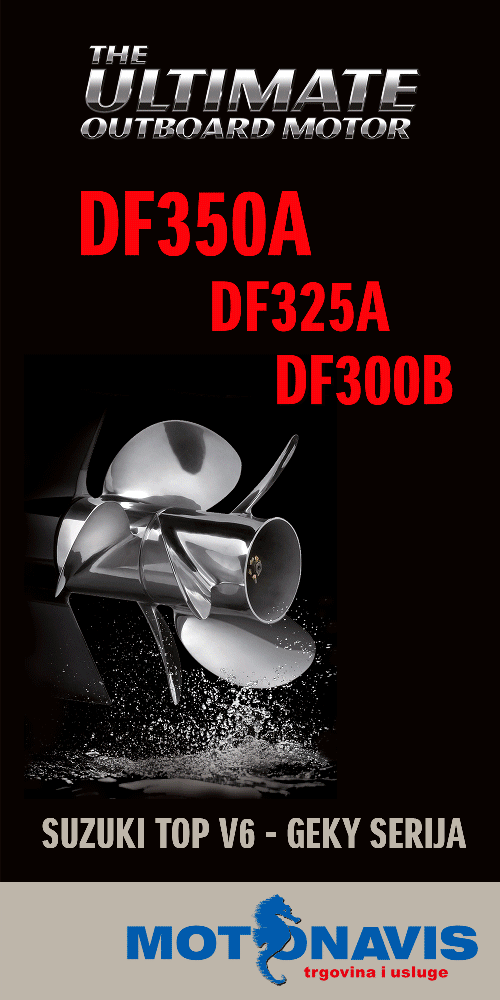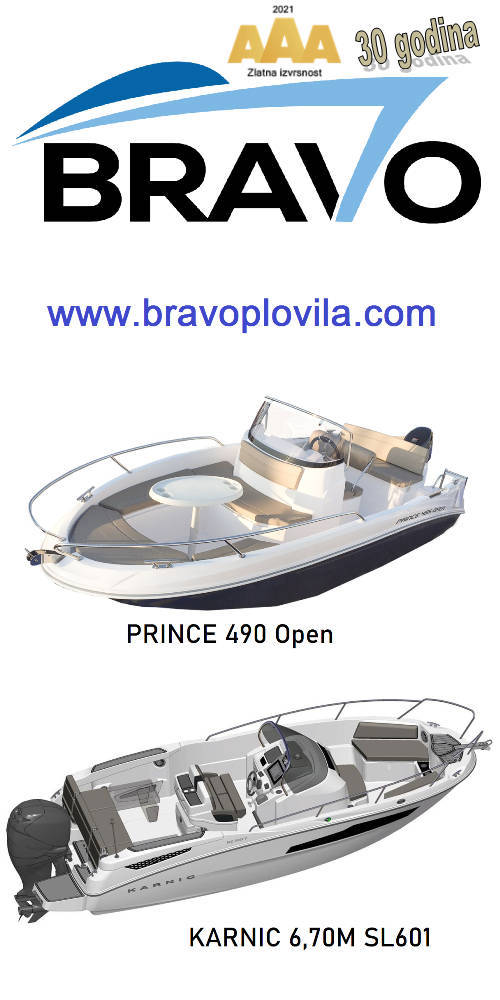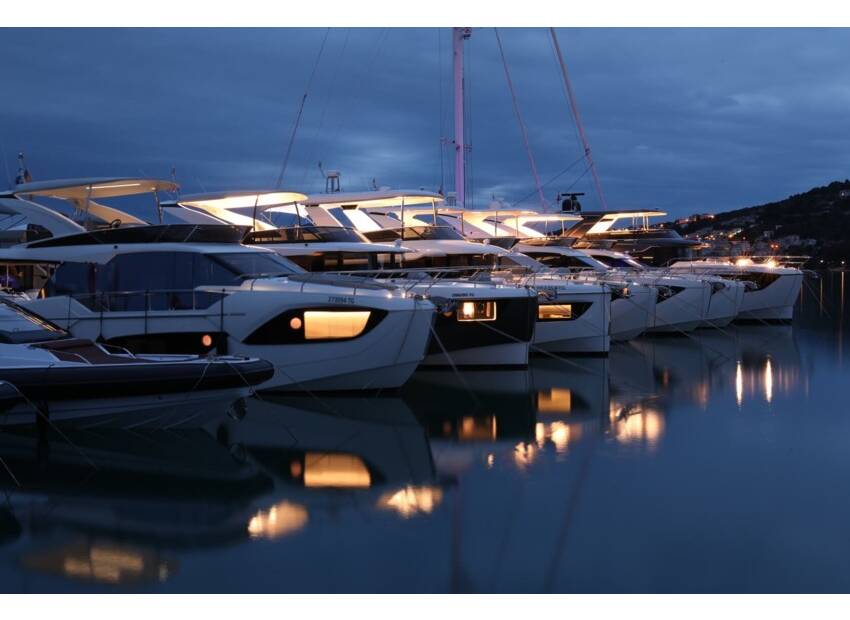Sea Ray Boats’ 2009 lineup gives owners a chance to own a piece of history with its new 22 Pachanga. The first 100 of these boats will come with a 50th Anniversary Limited Edition package that commemorates the company’s five decades of business and includes special Ultraleather HP upholstery, red gel coat and accents, and a numbered builder’s plate.
The original Pachanga was introduced in 1969 and represented a radical departure in style for the builder. Designed to satisfy a growing number of boaters who were more attracted to speed than to size and amenities, the 18-footer could exceed 50 mph and had a low profile, rakish windshield and prominent racing stripe. The name, which means “lively party” in Spanish, was brought back in 1986 when the 22-foot Pachanga II was launched. It pioneered the 260-hp MerCruiser sterndrive.
This latest version of the Pachanga, measuring 24 feet, honors the past while also incorporating the advanced technologies that boaters expect from today’s Sea Rays. The exterior is fast and flashy, with a sleek windshield, reverse sheer line and stainless-steel hardware. The limited-edition red gel coat, Pachanga logo and patterned vinyl give it an eye-catching, vintage feel.
But don’t let its retro looks fool you. The new Pachanga is a modern hot rod from the keel up. It runs on a deep V-hull and six lifting strakes that allow it come out of the water quickly and provide fast, nimble maneuvering. Standard power is a MerCruiser 350 Magnum MPI Bravo I sterndrive (300 hp - 225 kW). For extreme speed demons, three additional engine options range up to a scorching 496 Magnum HO Bravo III (425 hp - 317 kW). All of the power packages include Digital Throttle & Shift (DTS).
Designed as a real “driver’s boat,” the Pachanga has split performance shift and throttle levers for enhanced precision and control. Custom SmartCraft gauges have digital readouts that display vital engine data like fuel consumption and oil pressure. The instruments are housed in a soft-touch dash with lighted chrome toggle switches and power-assisted tilt wheel. Overall, the helm is a prime example of the sporty, automotive style that Sea Ray popularized aboard boats beginning in the 1960s.
The cockpit of the new Pachanga, like those of its predecessors, is all business. Two bucket seats serve the driver and navigator; each one swivels and slides and has a flip-up bolster. The cockpit bench is made up of three individually sculpted seats designed to hold passengers firmly in place at high speeds. A full-beam sun pad stretches aft to border the bolted-on swim platform, which has a concealed three-step ladder and is topped by non-slip rubber decking.
Under the sun pad, the engine hatch shows off a fiberglass finish and allows easy access to the iron. There’s also storage here, as well as in the cockpit floor, below the aft bench seat, in the lockable glove box and in the side panels. The large upholstered cuddy cabin has a deck hatch and houses the Sony AM/FM/CD stereo with MP3 port and Polk MOMO speakers. It can be equipped with an optional portable head.
Other options like an air compressor for water toys, ski mirror and carry-on cooler with designated storage offer families all-day fun and convenience. That makes perfect sense, because aboard the new 22 Pachanga, boating is all about non-stop, full-throttle action.
Published: 2009
Photo: Sea Ray
| Technical details | |
| Producer: | SEA RAY (USA) |
| LOA: | 24'00 ft |
| LOA: | 7,32 m |
| Beam: | 2,54 m |
| Draught: | 0,94 m |
| Weight: | 2351 kg |
| Deadrise: | 21 ° |
| Fuel tank: | 189 l |
| Max. passengers: | 7 |
| Cabins: | 1 |






















